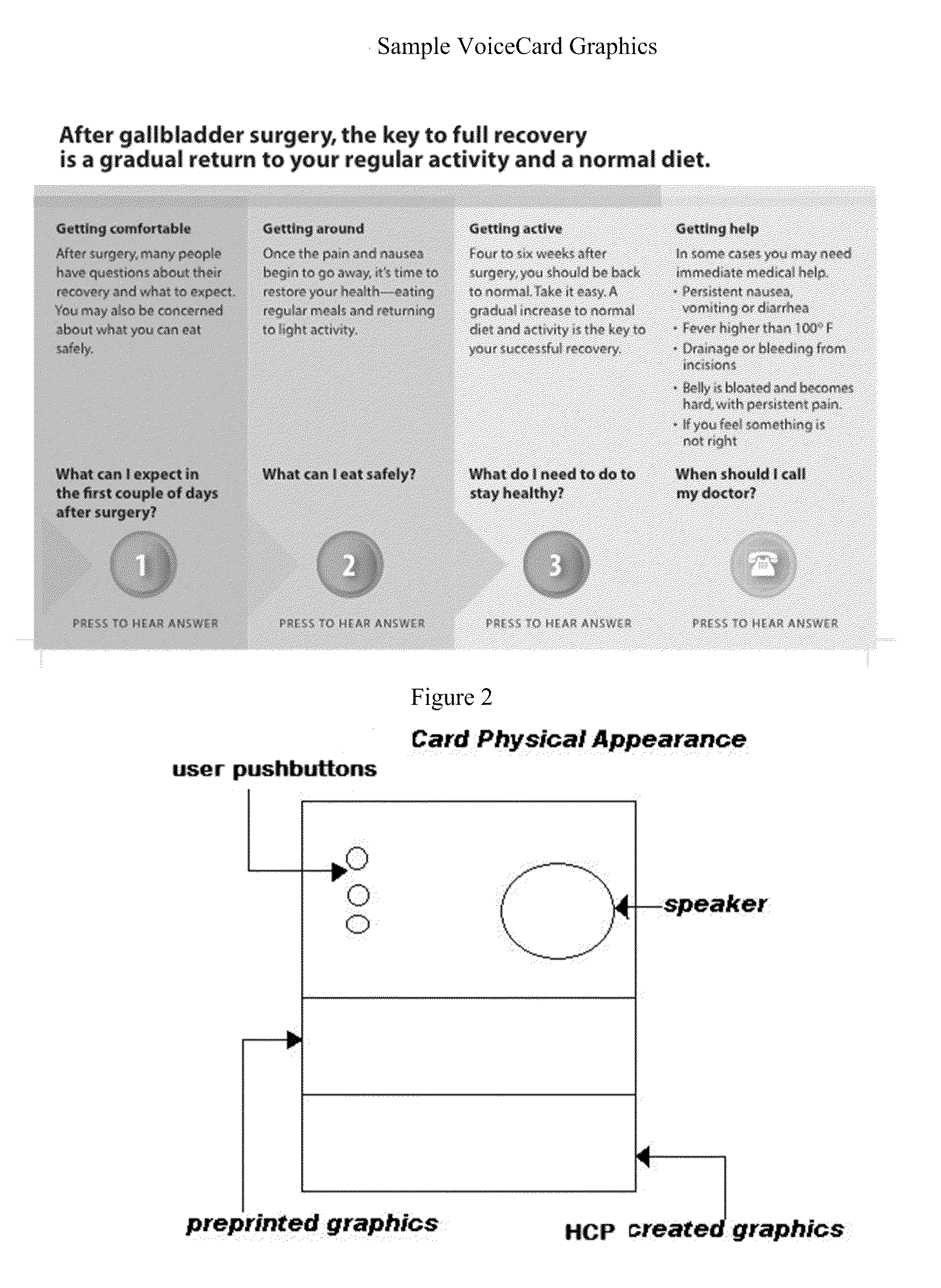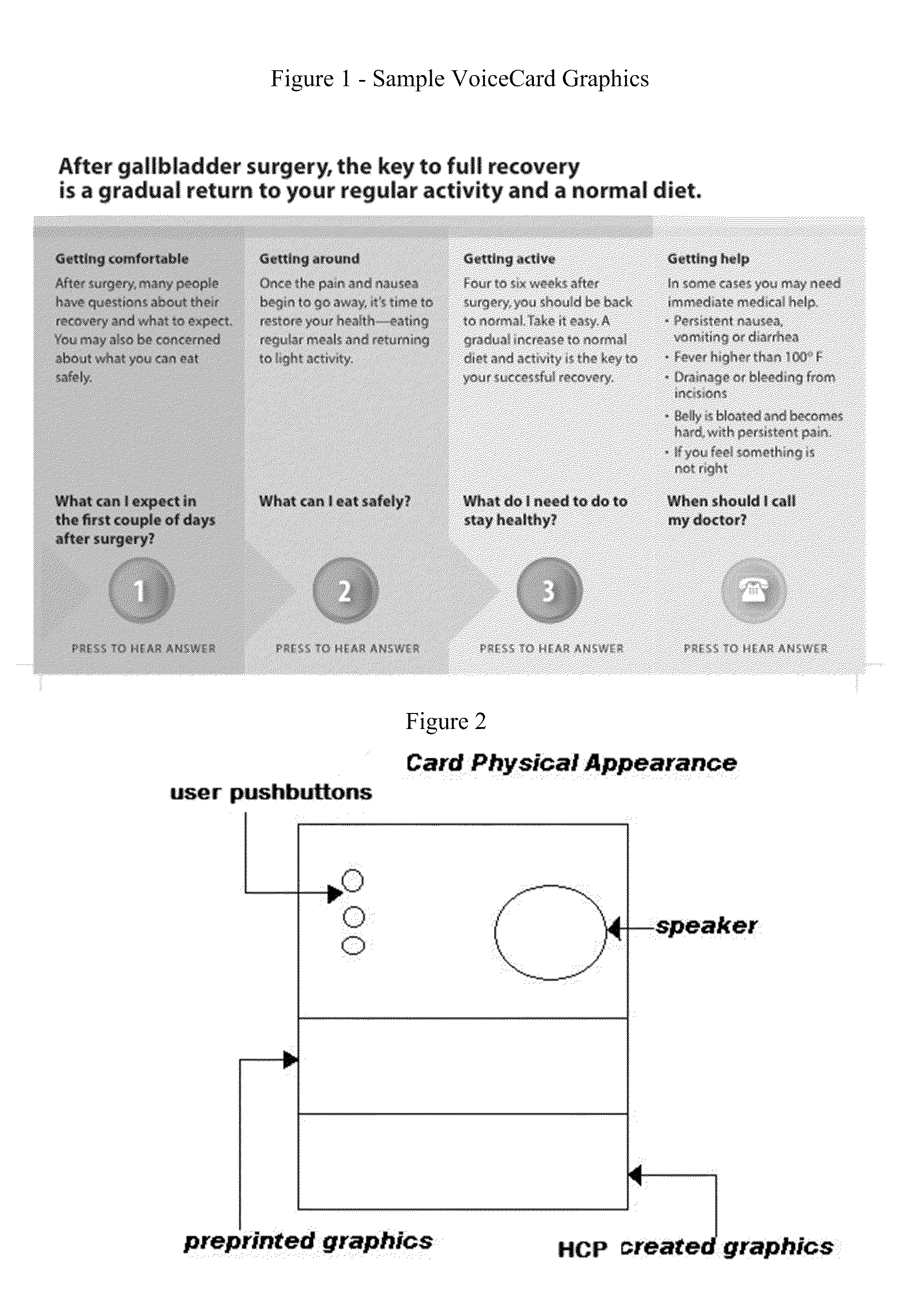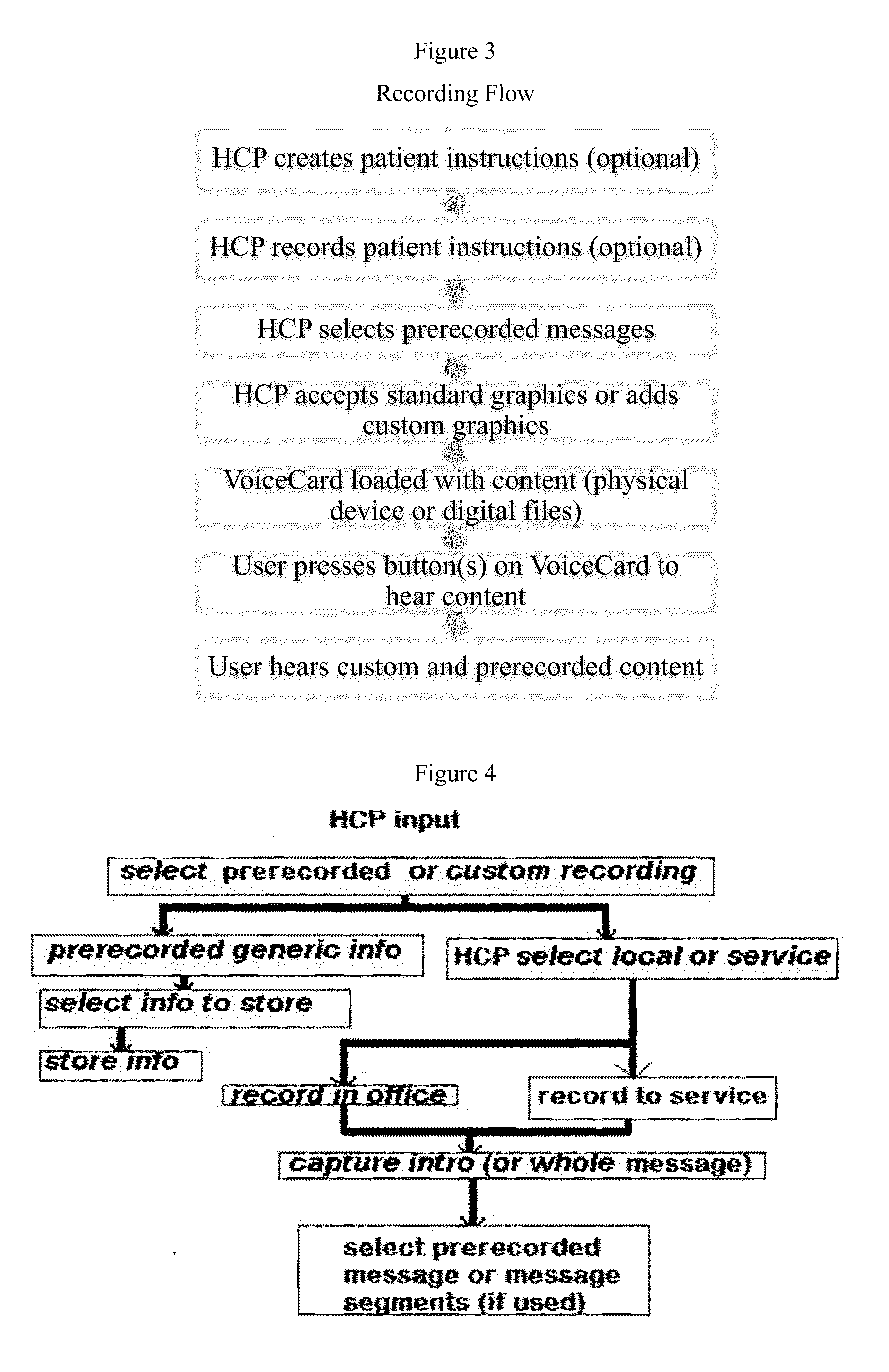Electronic Medical Voice Instruction System
- Summary
- Abstract
- Description
- Claims
- Application Information
AI Technical Summary
Benefits of technology
Problems solved by technology
Method used
Image
Examples
Embodiment Construction
[0053]This novel system allows a HCP to provide an alternative method of delivering care instructions to patients. In the case of surgical patients, the patient is naturally distracted by the pending surgery before the operation and is under the influence of various medications and pain relievers after the procedure. There exists a need to provide for better adherence with the HCP instructions. This invention provides for the provision of patient instructions in a combined voice (or video) and graphical format that can be personalized for the patient. The instructions are available for the patient to get an audible instruction whenever she / he needs confirmation of what she / he might have heard or has a worry and needs instructions about what to expect and how to handle it. Alternately, the patient (or a friend or family member) may procure the product at retail channels or online for their own use or as a gift for someone who might benefit.
[0054]FIG. 1 shows the graphics for a VoiceC...
PUM
 Login to View More
Login to View More Abstract
Description
Claims
Application Information
 Login to View More
Login to View More - R&D
- Intellectual Property
- Life Sciences
- Materials
- Tech Scout
- Unparalleled Data Quality
- Higher Quality Content
- 60% Fewer Hallucinations
Browse by: Latest US Patents, China's latest patents, Technical Efficacy Thesaurus, Application Domain, Technology Topic, Popular Technical Reports.
© 2025 PatSnap. All rights reserved.Legal|Privacy policy|Modern Slavery Act Transparency Statement|Sitemap|About US| Contact US: help@patsnap.com



